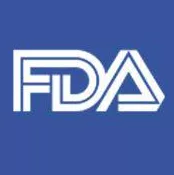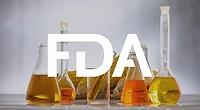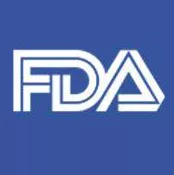FDA Shares Blueprint for Prevention-Based Microbiological Surveillance Sampling Program

The U.S. Food and Drug Administration (FDA) has announced a new web resource that shares information about the agency’s sampling programs for food safety. In addition to this new resource, a “more robust surveillance sampling approach” is also being developed--an effort that began in 2014.
Under this new program in fiscal year 2016, the FDA will begin sampling and testing cucumbers and hot peppers. Results will be published online, including the total number of samples collected/tested, the collection dates, sample types, and pathogens detected.
The FDA’s initial microbiological surveillance sampling that began last year focused on sprouts, avocados and raw milk cheese (aged 60 days). Those results have yet to be released.
The goal of the surveillance program is to “keep contaminated products from reaching consumers, and to facilitate a greater understanding of hazards.” These goals are also strongly rooted in the FDA’s Food Safety Moderization Act, which aims to prevent foodborne outbreaks before they happen, as opposed to solely responding to them after the fact. The microbiological surveillance sampling program will help to “identify hazards that need to be addressed to prevent contamination.” In order to build prevention-based systems, the surveillance program is necessary.
Here's How the Surveillance Program Works
The FDA collects a statistically determined number of samples of targeted foods over a 12 to 18 month period. This will ensure a statistically valid amount of data is available for decision making. Collecting a larger number of samples allows the FDA to assess the prevalence of pathogens and to determine if there are any common factors among the positive findings such as season, region, or whether the product was produced domestically or is imported.
The FDA Conducts Three Different Types of Sampling
Product Sampling
The FDA takes samples of food products ready to go to market, as well as in-process and raw ingredient samples, to ensure they don’t reach consumers with harmful contaminants, or to verify that they contain ingredients at levels as declared on product labeling.
Environmental Sampling
FDA also conducts environmental sampling, which means taking samples from the environment surrounding the food, whether it’s a facility or a transport vehicle. This type of sampling is important because environmental contamination of production facilities or transport vehicles may contribute to contamination of finished product.
Emergency Response/Emerging Issues Sampling
This type of sampling can take the form of either environmental sampling or product sampling, and often involves both. Emergency response sampling is routinely conducted in response to outbreaks of foodborne illness to help identify the source of the disease-causing pathogen. Emerging issues sampling helps the agency to gather information about potential food safety issues based on trends or intelligence the FDA might have.
What to Expect When the FDA Collects Samples
What the Investigator Does
The FDA investigator who arrives to collect samples will first present his or her agency credentials.
If there’s going to be an inspection, the investigator will give you a "Notice of Inspection" (FDA Form 482). After samples are collected or the inspection is completed, the investigator will provide a receipt (FDA Form 484) for all samples collected.
Some FDA investigators may be in uniform when they arrive to conduct sampling. They are members of the Commissioned Corps of the U.S. Public Health Service (USPHS) – professionals dedicated to protecting and promoting public health and safety. They are required to be in uniform when on duty. Though their uniform is similar to military dress, these health professionals are not members of the armed forces and work only in the interest of health promotion and disease prevention. (USPHS is a component of the Department of Health and Human Services and is directed by the U.S. Surgeon General.)
What You Do
FDA suggests that you have a person knowledgeable about your company, such as the plant or production manager, accompany the investigator at all times so that person has the opportunity to ask questions and to ensure your company is clear on the actions being taken. It is often best to designate this representative ahead of time so that he or she is prepared for the visit.
If samples are collected, you should tell the FDA investigator if you intend to hold product until sampling results are available.
Next Steps
FDA says that companies will be paid for all product or ingredient samples, except those collected under authority of a court order or decree. The FDA has issued a guidance document for determining sample cost. The costs may be billed to the district or cash may be used to pay for the samples.
The facility’s owner, operator, or agent in charge will be promptly notified if a sample tests positive for contaminants.
The FDA district staff will share all sample results, both positive and negative, when a firm agrees to hold products pending further analysis by the agency and notifies the FDA that it is planning to do so.
The district will call the firm management or its designee to discuss test results and may follow up with an e-mail or fax.
If potentially harmful contaminants are found in a product that has been distributed or is actually on the market, the FDA will consider regulatory and enforcement options. These include:
- encouraging a voluntary recall,
- ordering a mandatory recall,
- ordering administrative detention to prevent the product from being distributed,
- and/or issuing public warnings to alert consumers to the potential danger.
If potentially harmful contaminants are found in samples taken from imported food, the shipment(s) may be detained and refused entry, and future shipments may be subject to an Import Alert (detention without physical examination) as warranted.
Sign up for Food Safety Magazine’s bi-weekly emails!
Looking for quick answers on food safety topics?
Try Ask FSM, our new smart AI search tool.
Ask FSM →








